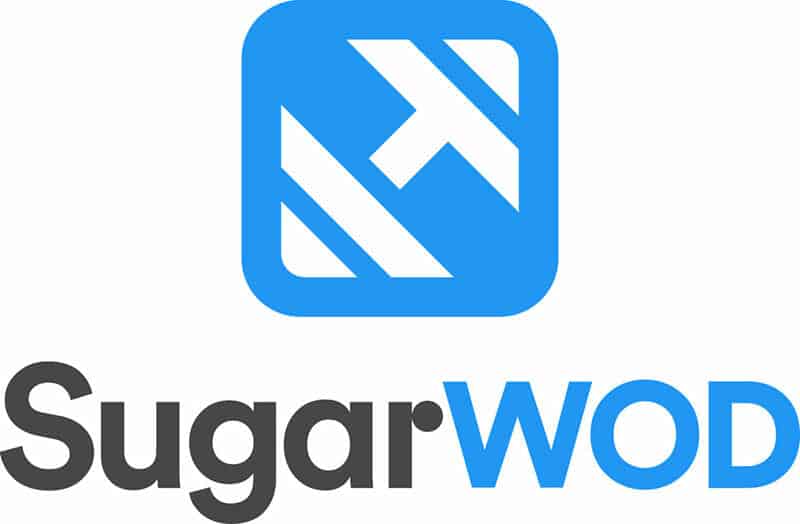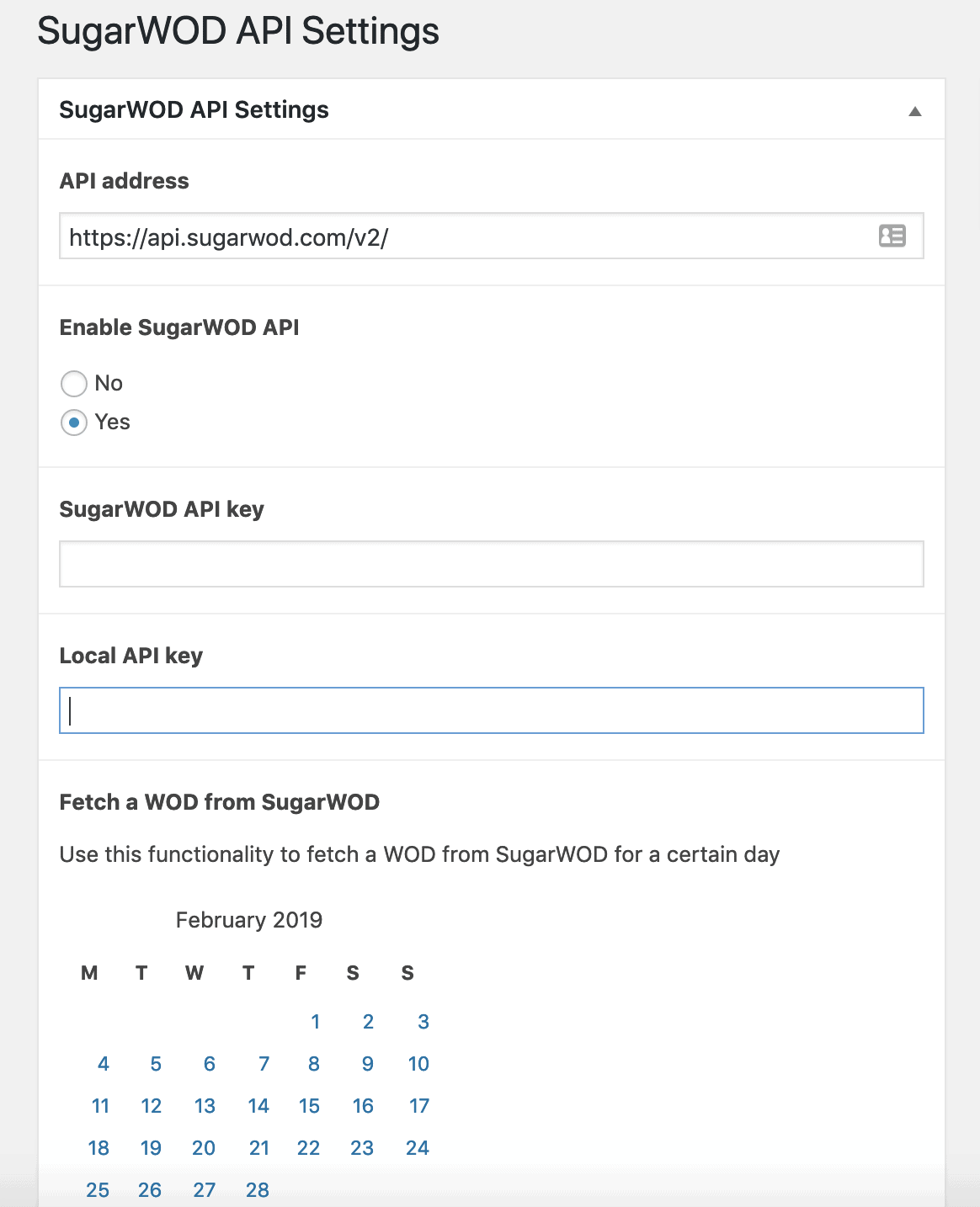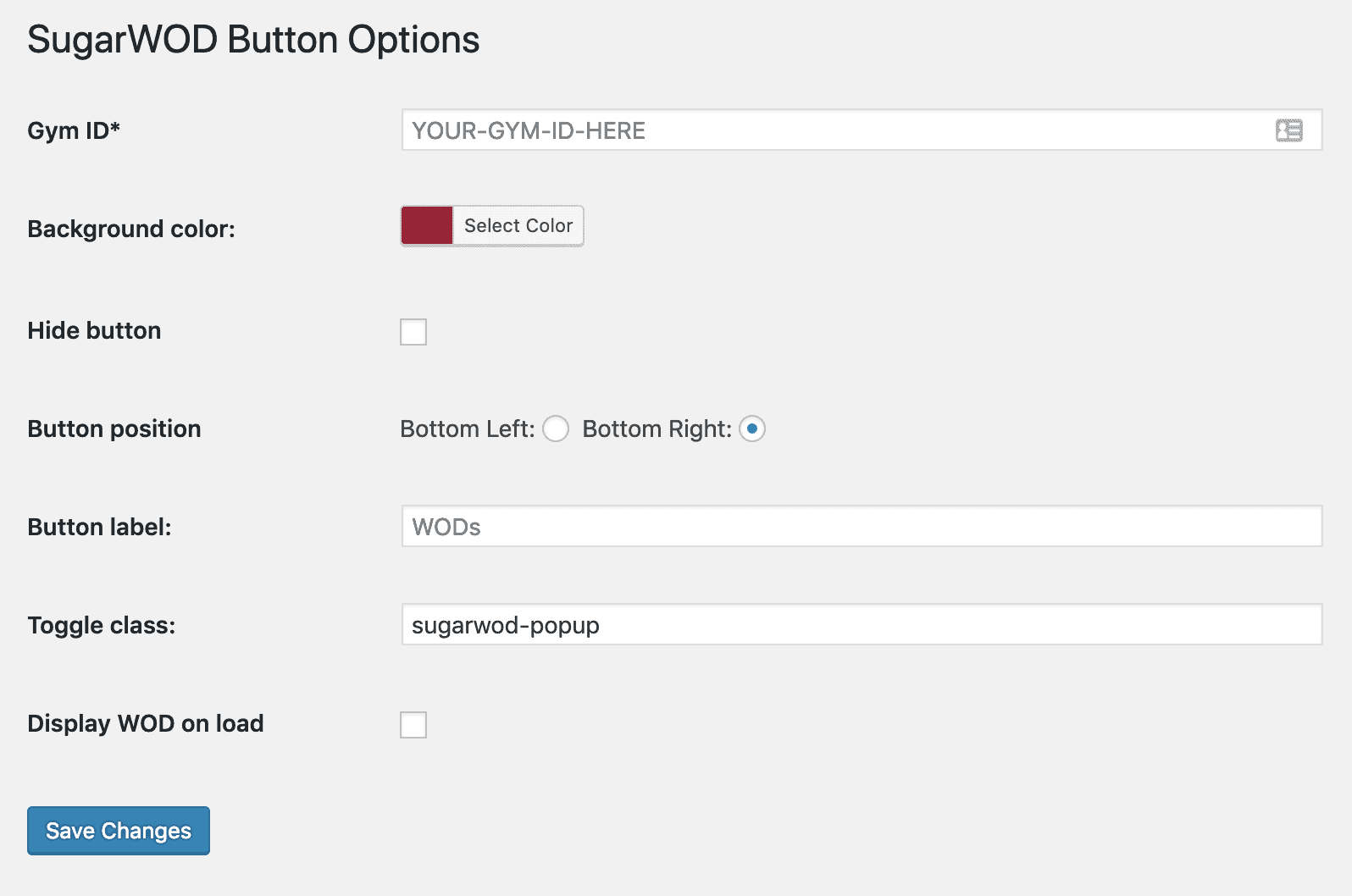
SugarWOD is software made specifically for CrossFit gyms (or boxes as they’re called within the CF community) that allows gym owners and coaches to manage workouts. It also comes with apps for athletes to keep track of their workout history either on the web or on a mobile device. A big part of the apps is the leaderboards, where members can see each other’s scores and kudos to others in the form of virtual fistbumps. As a CrossFitter myself, I like SugarWOD because it has done wonders in strengthening the community at my box and has made me want to push myself to get better as an athlete.
As a web developer, I like SugarWOD because of its extensive API. I had an opportunity to develop custom functionality to integrate SugarWOD into Second Wind CrossFit’s website (If you ask me, Second Wind is the best CrossFit gym in DC). As it is the WordPress way, I wrapped the functionality into plugins. One integrates the website with SugarWOD using the API. The second plugin makes adding SugarWOD’s “WOD button” to a WordPress site a breeze.
SugarWOD WordPress integration plugin
The WordPress plugin fetches the workouts, called WODs (short for “Workout Of the Day), from SugarWOD API and saves them into WordPress as posts. The plugin also runs a process to fetch the movements from the API and save them as posts in WordPress. When a WOD is published, it includes links to related movements allowing website visitors to see how the movements should be performed.
An added benefit of saving the WODs into WordPress is that prospective members can see the box’s workout history. By making workouts available on the web, they also become available for search engines to find.


SugarWOD button WordPress plugin
SugarWOD offers a JavaScript widget for adding their “WOD button”. Their documentation calls it a plugin, a word that has a different meaning in the WordPress nomenclature, but we resolved it by turning the widget into an actual WordPress plugin.
The plugin allows an administrator to add the button via the WordPress plugin rather than adding it into the WordPress theme directly. It also creates an easy-to-use user interface for administrators to configure the widget’s settings.

Are you contemplating signing up for SugarWOD or need to integrate it with your WordPress site? Send me a message, I’d love to help!